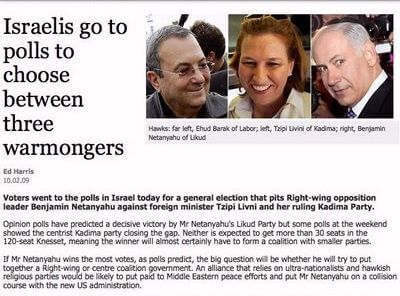Part three of an eight-part series explaining The 8 Categories of Media Bias. Learn more about how the ways journalists and media outlets fail to paint an accurate picture of reality.
Violation #3: Opinions Disguised as News
A journalist’s job is to report facts without injecting his own opinion or interpretation of events.
Reporters are entitled to their opinions, and veteran journalists have insights that can and should enrich the public’s understanding of developments. But the place for a reporter’s opinion or interpretation of events is in the op-ed section, or in articles or sidebars clearly labeled as analysis.
Blurring the distinction between fact and opinion undermines the journalist’s sacred mission of objectively reporting the facts and letting the public decide.
Even properly-labeled commentary requires a modicum of objectivity. Opinions must be based on accurate information, sound logic, and expressed respectfully. When columnists, talking heads, or bloggers play loose with the facts, twist logic, or stoop to personal attacks, the public conversation becomes toxic.
A study of 49 publications and whether they labeled editorials, news analysis, columns and reviews “found inconsistent terminology and a lack of labeling.”
Some organizations provide a mix of labels that conflate article types such as news and opinion with topic labels such as local, politics and sports. The result for readers is a jumbled labeling approach that fails to consistently distinguish different types of journalism.
Watch the Jerusalem Post’s Steve Linde and Gil Hoffman, The Algemeiner’s Ruthie Blum, and Dan Diker of the Jerusalem Center for Public Affairs discuss opinions disguised as news with HonestReporting.
EXAMPLE: While interviewing a Jewish woman at a Paris solidarity rally after the Charlie Hebdo terror attack, BBC reporter Tim Willcox interrupted her to say
Many critics of Israel’s policy would suggest that the Palestinians suffer hugely at Jewish hands as well.
It’s worth noting that Willcox specifically said Jewish rather than Israeli, effectively holding French Jewry (and all Jews) responsible for the actions of Israel.
EXAMPLE: On election day, 2009, the faces of Ehud Barak, Tzipi Livni and Benjamin Netanyahu appeared in the Evening Standard’s news section alongside the headline (later changed).

EXAMPLE: Reporters declaring that “Israeli settlements are illegal in international law.” (Sometimes, this is followed with the qualifying line, “but Israel disputes this.”) In fact, international legal opinion on the legality of settlements isn’t so clear cut. Eugene Kontorovich, Mitchell Bard, Eugene Rostow, Moshe Dann, and Jeffrey Helmreich, among others, expand on why. Helmreich, for example, writes:
The West Bank and Gaza are disputed, not occupied, with both Israel and the Palestinians exercising legitimate historical claims. There was no Palestinian sovereignty in the West Bank and Gaza Strip prior to 1967. Jews have a deep historic and emotional attachment to the land and, as their legal claims are at least equal to those of Palestinians, it is natural for Jews to build homes in communities in these areas, just as Palestinians build in theirs.
OTHER EXAMPLES include a David Leonhardt column on US health care reform which the New York Times published on the front page in 2010. Readers complained to public editor Arthur Brisbane that the front page placement inappropriately blurred the lines between news and commentary. And the Toronto-based Globe & Mail was embroiled in controversy when reporter Jan Wong tied a shooting rampage at a Montreal college to Quebec racism and language laws.
Discussing coverage of Islamic State, Paul Wood asks if journalists unintentionally cross into propaganda by reporting too many details.
Buzzfeed canceling a $1.3 million ad deal with the Republican party over Donald Trump. Was it the right thing to do?
Click to learn more about each individual category.
The 8 Violations of Media Objectivity
- Misleading definitions: Prejudicing readers through language.
- Imbalanced reporting: Distorting news through disproportionate coverage.
- Opinions disguised as news: Inappropriately injecting opinion or interpretation into coverage.
- Lack of context: Withholding a frame of reference for readers.
- Selective omission: Reporting certain events over others, or withholding key details.
- Using true facts to draw false conclusions: Infecting news with flawed logic.
- Distortion of facts: Getting the facts wrong.
- Lack of transparency: Failing to be open and accountable to readers.
See also the introduction to this series and some final thoughts and acknowledgements, wrapping the concepts together and raising awareness for news literacy.
“Red Lines: The Eight Categories of Media Bias,” is available on Amazon for purchase as an e-book.
Before you comment on this article, please remind yourself of our Comments Policy. Any comments deemed to be in breach of the policy will be removed at the editor’s discretion.

